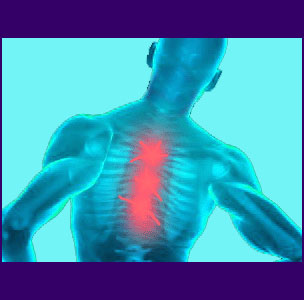
Qigong for back pain is a martial arts derived method of mindbody personal enhancement that uses dynamic and passive meditations, sounds and exercises to reduce symptoms and foster positive health benefits. Qigong is one of the most practiced health-related activities on earth, with billions of people subscribing to its potentially limitless rewards.
Qigong is surely an East Asian phenomenon, with few westerners even knowing what the practice is or how it can benefit their health. Qigong is an inherent part of Traditional Chinese Medicine and is also a component of virtually all martial art styles.
This explorative essay details the use of qigong as a treatment for any type of chronic pain or problematic health condition. We will focus on utilizing qigong for back pain and specific guidance will be provided for patients who are interested in learning more about this holistic mindbody life activity that shows much promise for providing natural and risk-free pain relief.
Qigong for Back Pain Defined
Qigong, alternately commonly spelled chi kung, is an ancient practice dating back thousands of years in China. Qi means life energy. Qi is the force that provides all the processes that power the mind and body. Qi is created, transformed and released through various mechanisms and can even be consciously moved throughout the body to accomplish seemingly miraculous feats in high level practitioners of the art. The idea of qi is fundamental to TCM, taiqiquan and all martial arts. Qigong is the practice of developing and refining life energy for general health and for specific purposes.
There are many, many styles of qigong, since individual masters specialized in developing and perfecting techniques for highly focused purposes. Even within each qigong style, the methods used range greatly from active to passive practices, with each having mind and body components.
Qigong might consist of relaxed or dynamic mediation, exercises, mental focus work, visualization techniques, the generation and expression of sounds, and many other possible techniques that are thought to engineer qi energy in the body, store qi energy in the body, release qi energy from the body and focus qi energy for specific purposes.
General qigong improves constitutional strength, powers up the mind and unifies anatomy and spirit. Specific goals of qigong can include virtually any type of mind or body objective.
Qigong Effectiveness
Qigong for back pain has been subjected to many scientific research studies, by both Eastern and Western medicine. However, many studies were inconclusive about the actual benefits derived from practice, due to many factors, including poor study practices, lack of control groups and possible placebo effect based on conditioning, prejudice or social hypnosis.
However, many individual practitioners cite very positive results of using qigong for health, including many patients within the back pain community. Since qigong demonstrates no risks whatsoever, and might provide a range of health benefits besides many cognitive and fitness benefits, there is certainly no reason not to try the techniques to see if they might be a valuable part of a back pain relief program.
People who are looking specifically for pain management using qigong should always seek out a style and teacher that concentrates on this objective. Remember, there are thousands of variations on qigong techniques and in order to best benefit in terms of pain management, this should be the primary objective of practice.
I will not speculate on which qigong techniques are most useful here, since different patients respond differently to the methods used. In essence, what works well for some, might not be ideal for others. The best thing about qigong is that the practice contains so many possible methods that virtually all patients are sure to find things that work well for their own specific needs.
Qigong for Back Pain Experiences
Many of you already know that I am a career martial artist and have practiced qigong techniques for virtually my entire life. While I do recommend qigong, I do not claim it to be a cure for any specific health issue, although many health benefits are imparted through diligent practice. In fact, this is and has always been one of my biggest complaints about some of the East Asian healing arts; they often claim seemingly impossible benefits for every conceivable ailment, but usually fail to deliver the types of miraculous outcomes promised. Most do provide benefits, but these benefits do not typically qualify as actual cures…
Qigong can improve mind and body fitness, enhance the functionality of the bodily systems, improve concentration, provide relaxation and improve the influence of the conscious mind upon the physical body. However, I have yet to see qigong resolve a structural spinally-motivated back pain problem.
Patients who suffer from muscular back pain concerns and some types of mindbody pain syndromes probably have the most to gain from regular qigong participation. This is because the types of techniques utilized will work on correcting some of these varieties of pain generators, while spinal issues are largely not acted upon by the qigong processes.
In my experience, qigong is best used in combination with other mindbody techniques, such as transcendental meditation, tai chi, yoga and knowledge therapy. To learn more, speak to your doctor first and then seek out qualified instruction from an expert qigong teacher.





